This article dives into some effective ABA techniques designed to boost children's compliance. We’ll explore strategies like:
Research shows that when we use structured and engaging approaches tailored to a child's preferences, it can really make a difference! These methods significantly improve adherence to tasks, creating a more positive and productive learning environment.
As parents, we know how challenging it can be to encourage our little ones to stay on task. But with the right techniques, we can foster an atmosphere of cooperation and understanding. Let’s explore this together! By implementing these strategies, you can help your child thrive in their learning journey.
Remember, you’re not alone in this! We’re here to help you every step of the way. Feel free to share your experiences or ask questions in the comments below—let’s create a supportive community together!
Understanding and addressing behavioral challenges in children can often feel overwhelming for parents and caregivers. But don’t worry! With the right strategies, you can achieve significant improvements in compliance and overall behavior. This article explores seven high-probability ABA techniques that not only enhance a child's ability to comply but also create a supportive and engaging learning environment. Imagine if these techniques could transform everyday interactions into opportunities for growth and connection! Let’s discover how these evidence-based approaches can empower both children and their families on the journey toward effective behavior change. We’re here to help you every step of the way!
At Rori Care, we truly understand the essential role of personalized ABA therapy, which is based on high probability ABA tailored to each child's unique needs. 🌟 By using data-driven assessments, our clinicians can identify the most effective techniques that have a high probability ABA of leading to positive behavior changes. This custom approach not only boosts adherence but also creates a nurturing environment where young individuals have a high probability ABA to thrive.
Plus, we’ve integrated technology into our methods, like our AI that automates progress report creation. This innovation enhances personalization, aligning therapy with each child's preferences and learning styles, ultimately leading to better outcomes. With AI handling 50% of the reporting workload, our clinicians can spend more time focusing on direct treatment for children, which greatly improves the effectiveness of high probability ABA.
Family involvement is another key piece of the puzzle! Clinicians consistently share that when families actively participate, it helps reinforce progress and strengthens the skills learned at home. This collaboration truly amplifies the therapy’s impact. At Rori Care, we’re dedicated to supporting families with compassionate Applied Behavior Analysis treatment, which utilizes high probability ABA strategies to empower caregivers with the tools and principles needed to help their children achieve their behavioral goals. Let’s explore this journey together! We’re here to help you every step of the way!
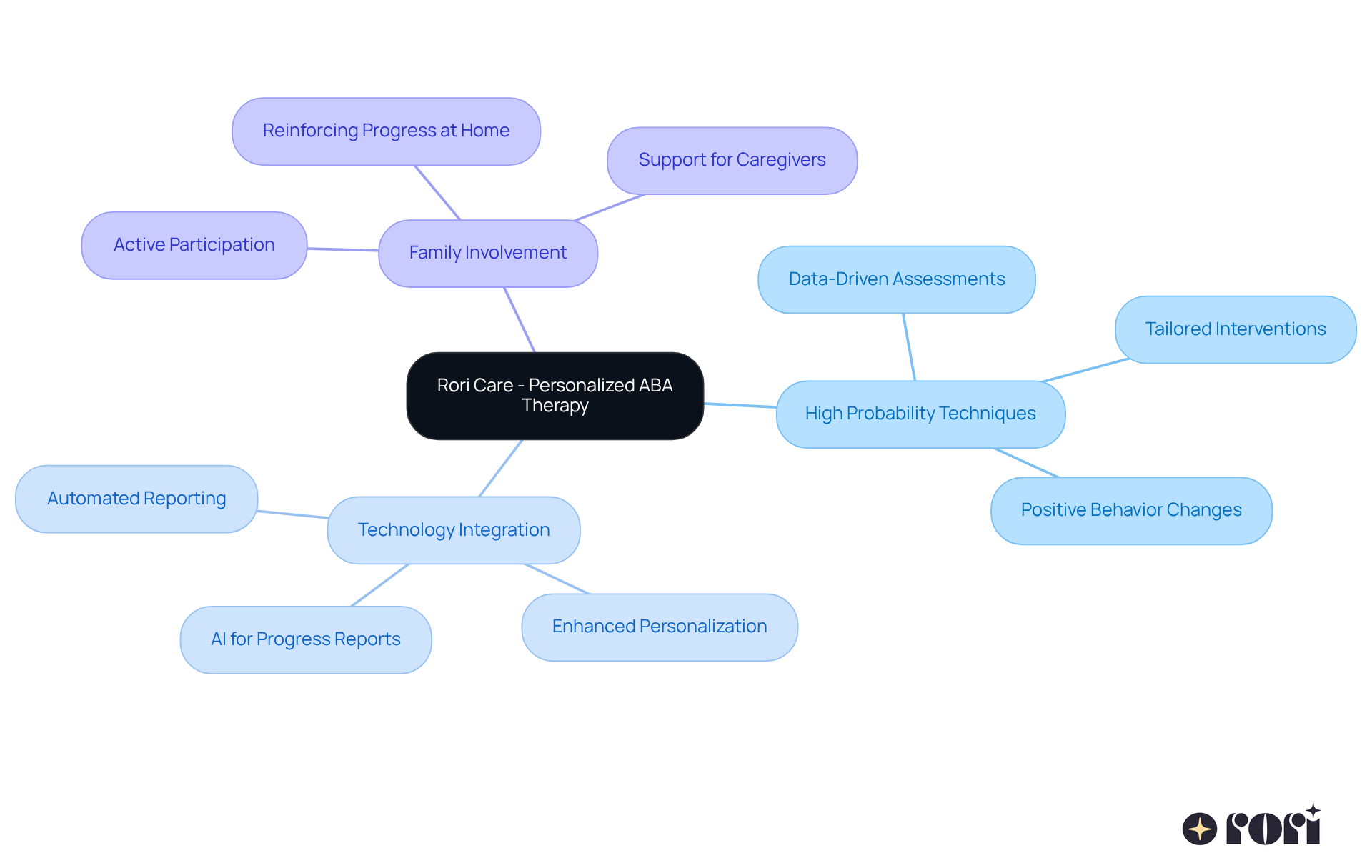
The Premack Principle is a fantastic strategy in high probability ABA therapy that utilizes the idea that activities kids enjoy can help encourage them to tackle less appealing tasks. For instance, if a child loves playing with toys, a clinician can use this fun activity as a reward for completing homework or chores. This not only boosts the likelihood of sticking to tasks but also makes learning a lot more enjoyable!
Research shows that when kids are rewarded with activities they love, adherence rates can really improve. It transforms tasks from feeling like a chore into something rewarding. Behavior analysts point out that this approach helps foster a positive relationship with task completion, motivating young ones to engage willingly in their responsibilities.
By using the Premack Principle, both parents and clinicians can create a motivating environment that has a high probability of promoting compliance and supporting skill development. Plus, it’s super important for analysts to regularly check in and tweak how they apply this principle to meet the evolving needs of children.
Parents can also get in on the action at home! By identifying what their kids enjoy most and using those activities as rewards for completing necessary tasks, they can reinforce positive behavior and make learning much more engaging. Let’s explore this together and see how you can make the most of this approach!
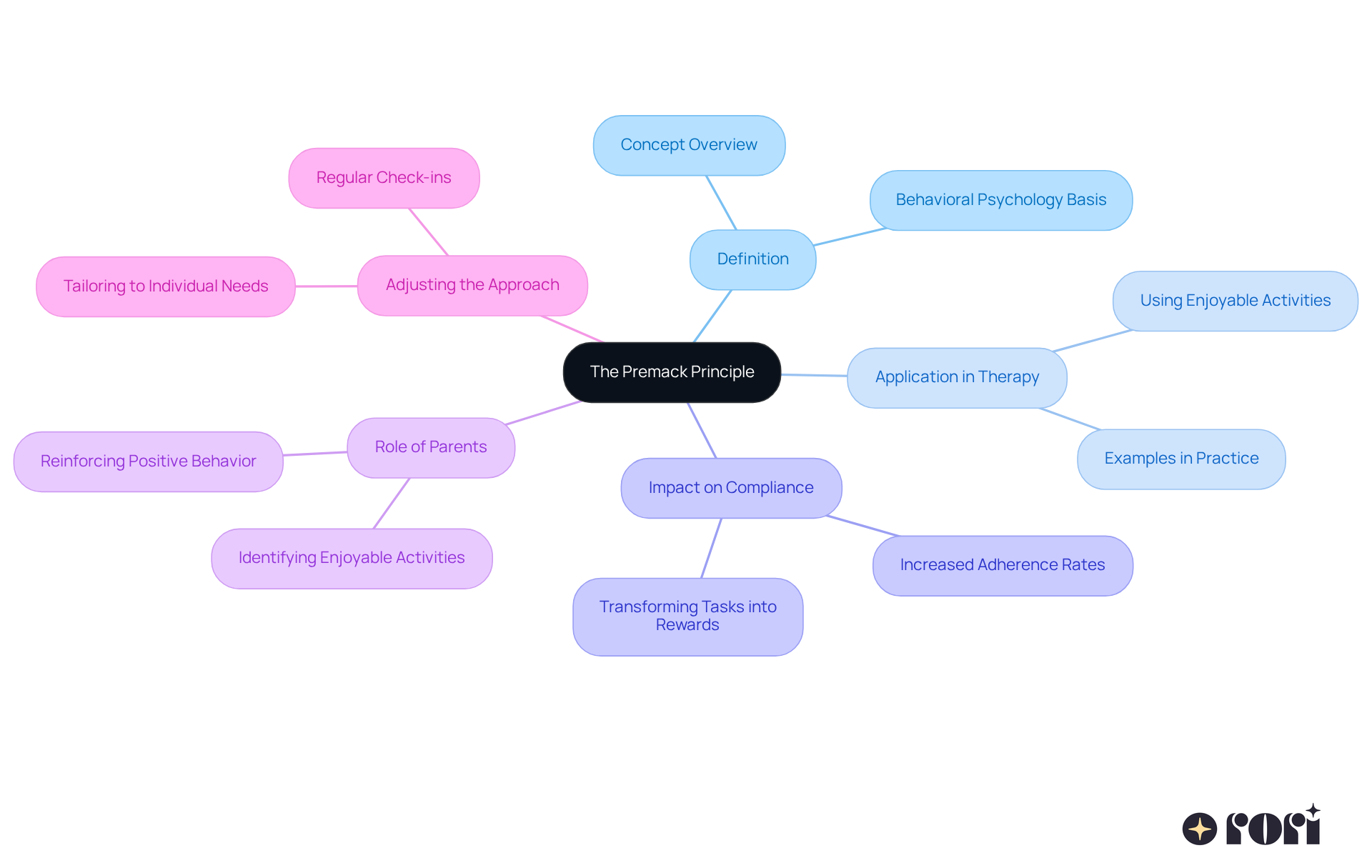
Behavioral momentum is such a helpful approach, especially for young individuals! It starts with simple tasks, which encourages a pattern of adherence. For example, clinicians often kick things off with easy requests like 'clap your hands' before moving on to more complex tasks. This gradual method not only helps kids experience success but also boosts their readiness to comply with later requests.
Research shows that starting with simple tasks can really improve adherence rates. Studies indicate that youngsters who engage in high-probability ABA command sequences tend to agree more with low-probability requests. By building this momentum, adherence becomes a natural progression rather than a struggle, making it a fantastic technique in high probability ABA.
Clinicians really emphasize the value of this method. They point out that beginning with manageable tasks lays a solid foundation for future success. As one clinician beautifully put it, 'Starting with easy tasks allows children to build confidence, which is crucial for tackling more challenging demands later on.' This approach not only enhances immediate compliance but also supports long-term behavioral development.
So, let’s explore this together! It’s all about creating that supportive environment where children can thrive.
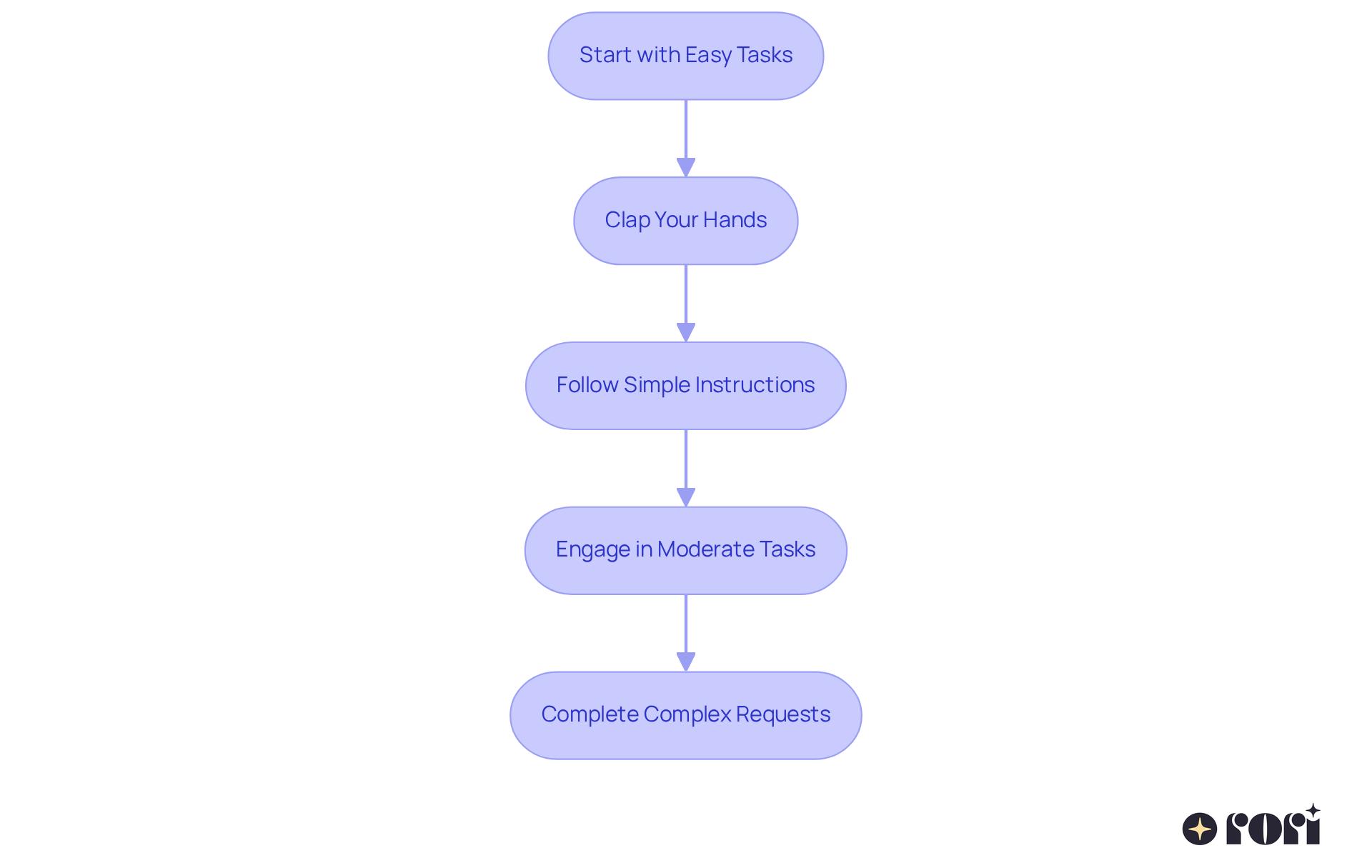
High probability aba request sequences are a fantastic strategy in ABA therapy! By presenting a series of easy requests before introducing a more challenging one, clinicians can really help kids shine. For example, a clinician might start by asking a child to 'touch your nose,' then follow up with 'jump,' and finally, 'pick up the toy.' This approach builds the child's confidence and significantly boosts the chances of them agreeing to the next, trickier request.
Research indicates that this method not only improves adherence rates but also has a high probability aba of creating a positive learning atmosphere. In fact, studies have found that compliance with low-probability requests can increase dramatically when preceded by high probability aba requests. Some interventions have even reported compliance rates soaring to 100% during optimal conditions! Behavior analysts emphasize that starting with achievable tasks lays a solid foundation for success, as this approach has a high probability aba of making it easier for kids to tackle more complex directions later on.
This method beautifully illustrates how organized, data-driven approaches can lead to significant improvements in behavior and learning outcomes for individuals with autism. Plus, the ongoing evaluation and adjustment of personalized plans by qualified behavior analysts are crucial for fostering these positive behavior changes.
By incorporating AI-driven progress report automation, Rori Care boosts the efficiency of ABA therapy, allowing clinicians to dedicate 50% more time to direct treatment. This ultimately empowers caregivers with the knowledge and tools they need to support their children's behavioral goals. Let’s explore this together! We’re here to help you every step of the way!
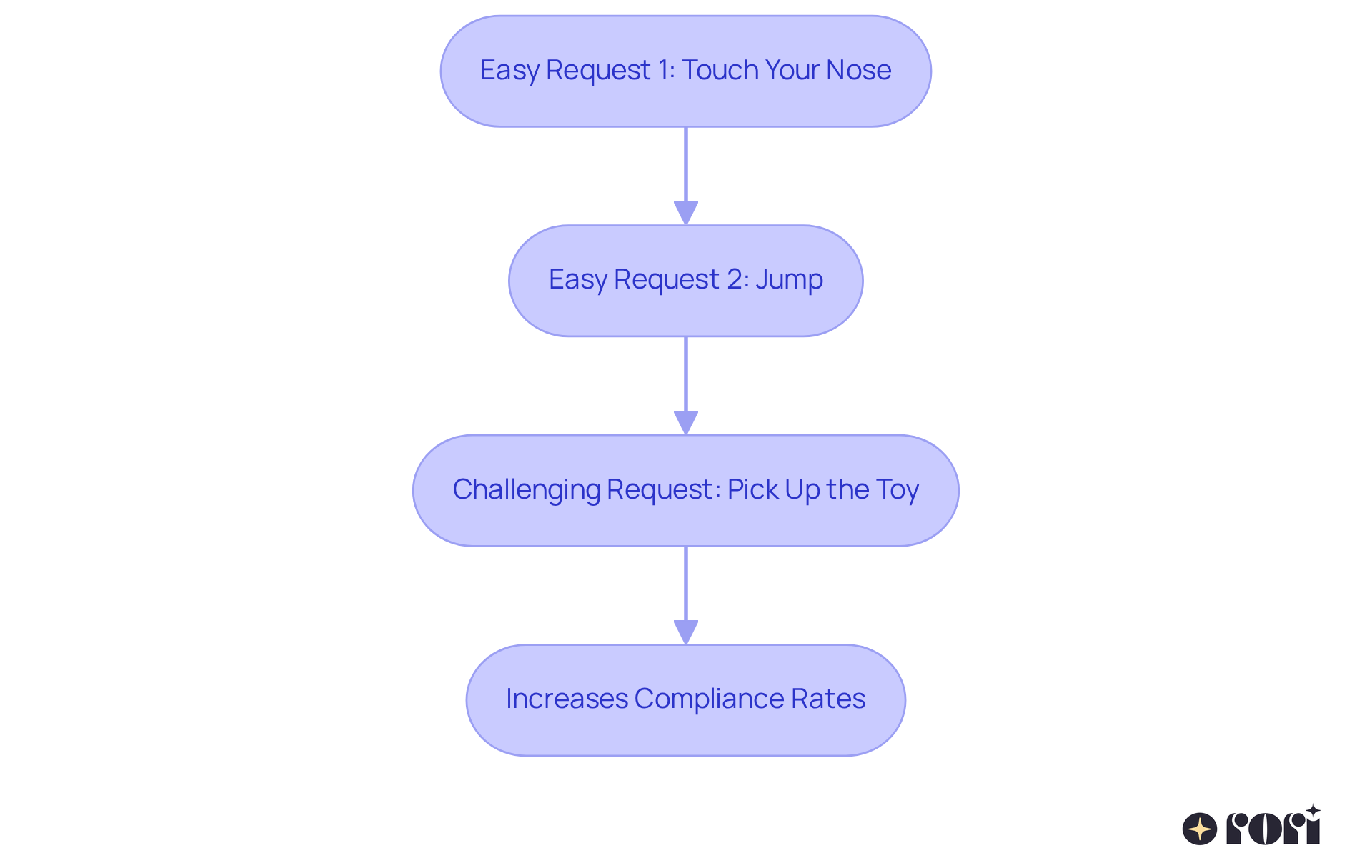
Visual aids, like charts, images, and schedules, are such valuable resources in ABA therapy! They really help individuals with autism better understand what’s expected of them. These visual aids provide clear, tangible representations of tasks, making it easier for everyone involved. For instance, studies have shown that visual schedules can help young individuals anticipate transitions and grasp the sequence of activities, which can significantly reduce anxiety and promote compliance. 📊
In fact, a meta-analysis of 14 randomized controlled trials found that using visual supports led to a standardized mean difference of 0.11 in socialization outcomes. That’s a positive sign of their effectiveness! Clinicians often highlight that incorporating these visual supports creates a structured and comprehensible learning environment, fostering independence and engagement.
You might find it interesting that real-life examples show youngsters using visual schedules often display enhanced on-task behaviors and better task completion rates. This really emphasizes how effective these approaches can be in everyday settings. As one clinician put it, 'Effective communication is essential for youngsters with autism,' and visual supports play a crucial role in enhancing this communication, ultimately leading to improved outcomes in ABA therapy.
Moreover, when caregivers are informed about ABA principles and strategies, they can effectively use these visual aids at home. This not only reinforces the therapeutic objectives but also promotes consistency in their learner's education. It’s a win-win! This active participation boosts behavioral results and empowers caregivers, giving them more confidence in supporting their child’s development.
Let’s explore this together! We’re here to help you every step of the way!
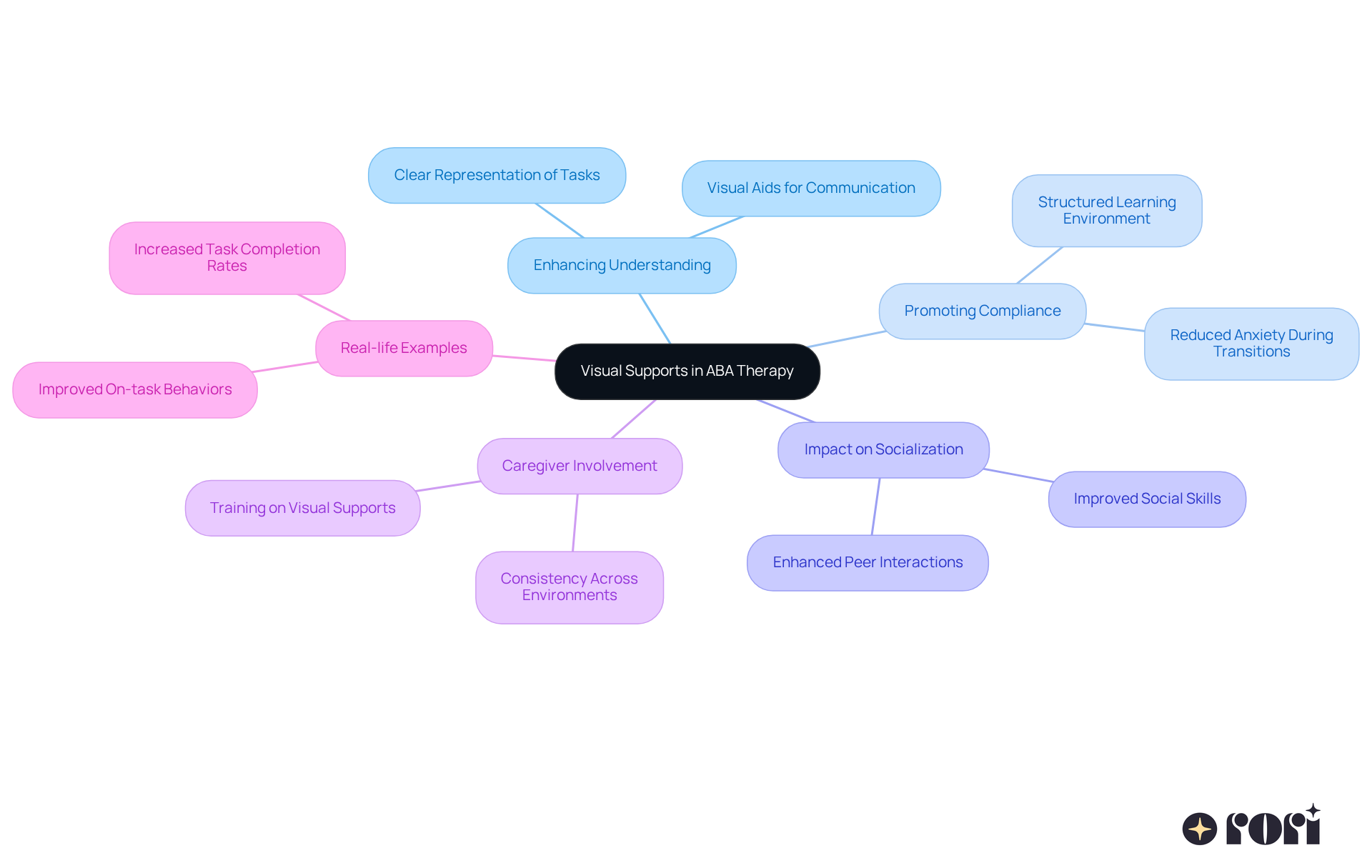
Token economies can be a fantastic way to encourage positive behaviors in young people! Imagine this: a young individual earns tokens or points for showing desired behaviors, which they can later trade for fun rewards. For example, they might receive a token for every task they complete, which can be exchanged for a favorite activity or item. This approach not only motivates them to comply but also teaches valuable lessons about delayed gratification and the importance of working towards a goal.
Research shows that these token systems can create a high probability aba for boosting motivation and attention spans, especially for young individuals with autism. In fact, one study found that using a token economy led to impressive improvements in compliance and a reduction in disruptive behaviors among participants. It’s important to note that ongoing reinforcement and teamwork with parents and teachers are key to making these interventions effective.
Behavior analysts stress the need to tailor token systems to fit individual needs, ensuring that the tokens are meaningful and motivating. Parents can set up token systems at home by clearly defining the behaviors to reward and selecting tokens that resonate with their kids. As experts point out, focusing is a crucial skill for academic success, and token economies can help create a more engaging and supportive learning atmosphere.
There are many successful examples of token economies in various educational settings, highlighting their flexibility and effectiveness in promoting positive change. By offering tangible incentives, clinicians and behavior analysts can effectively encourage preferred behaviors, utilizing high probability aba to support the ongoing growth of young individuals. Let’s explore this together and see how a token economy might work for your family!
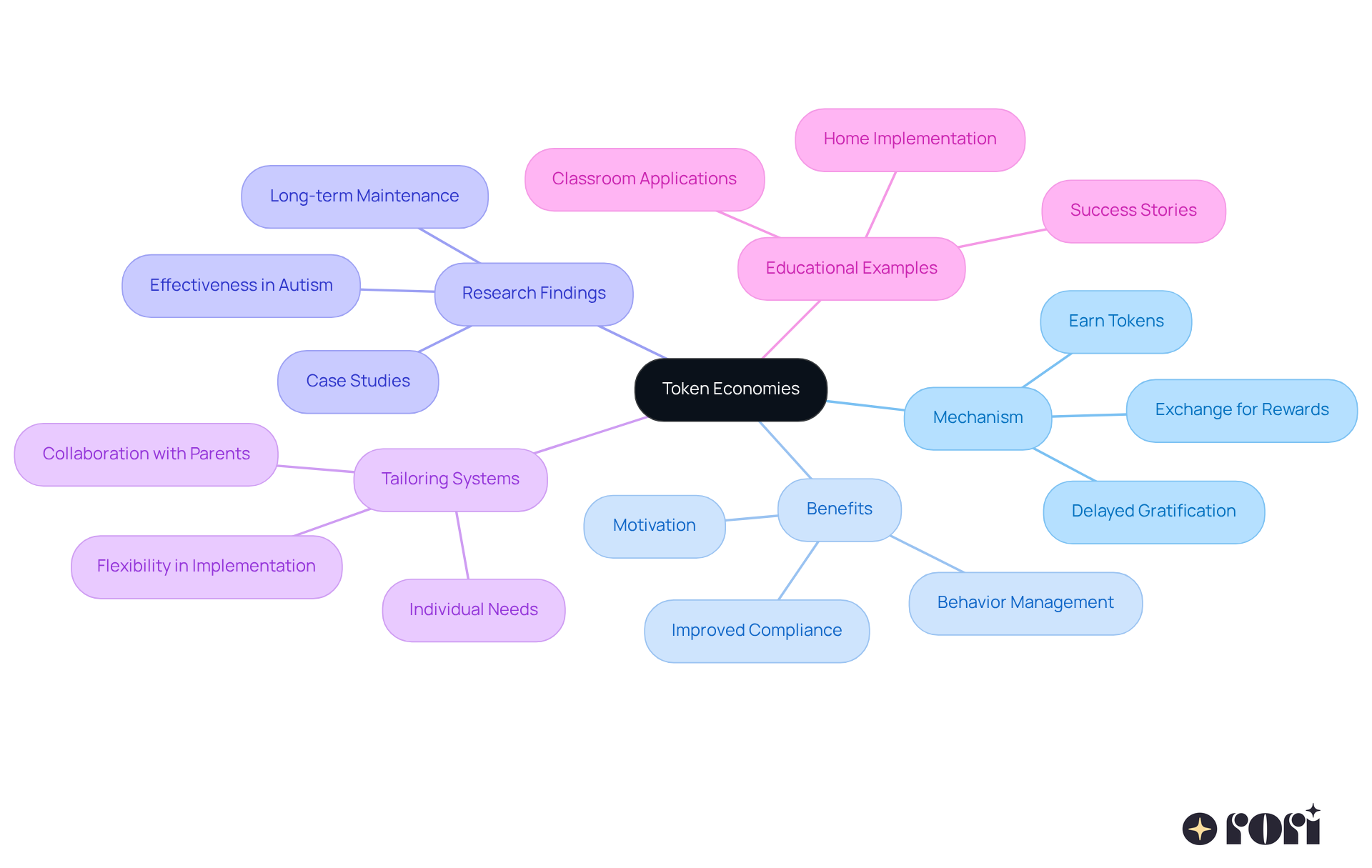
Functional Communication Training (FCT) is so important for helping young individuals express their needs and wants effectively. By giving them communication tools like picture exchange systems or basic sign language, we can really help reduce frustration and boost compliance. Imagine a young person learning to ask for a break instead of acting out—this not only helps them engage positively with their surroundings but also empowers them.
This training fosters a wonderful connection between young individuals and their caregivers. Caregiver education is key here! It equips caregivers with the knowledge and strategies they need to reinforce these communication methods at home, promoting consistency and enhancing support. When caregivers understand the principles of high probability aba, they can make informed decisions that positively influence their child’s progress.
Clinicians highlight that fostering effective communication leads to a noticeable decrease in anxiety and frustration for young individuals, which improves their social interactions and overall quality of life. Effective approaches in FCT involve ongoing reinforcement of preferred communication techniques and gradually introducing more complex requests. This way, young individuals feel confident expressing their needs, while caregivers are empowered to support their growth efficiently. Let’s explore this together and see how we can make a difference!
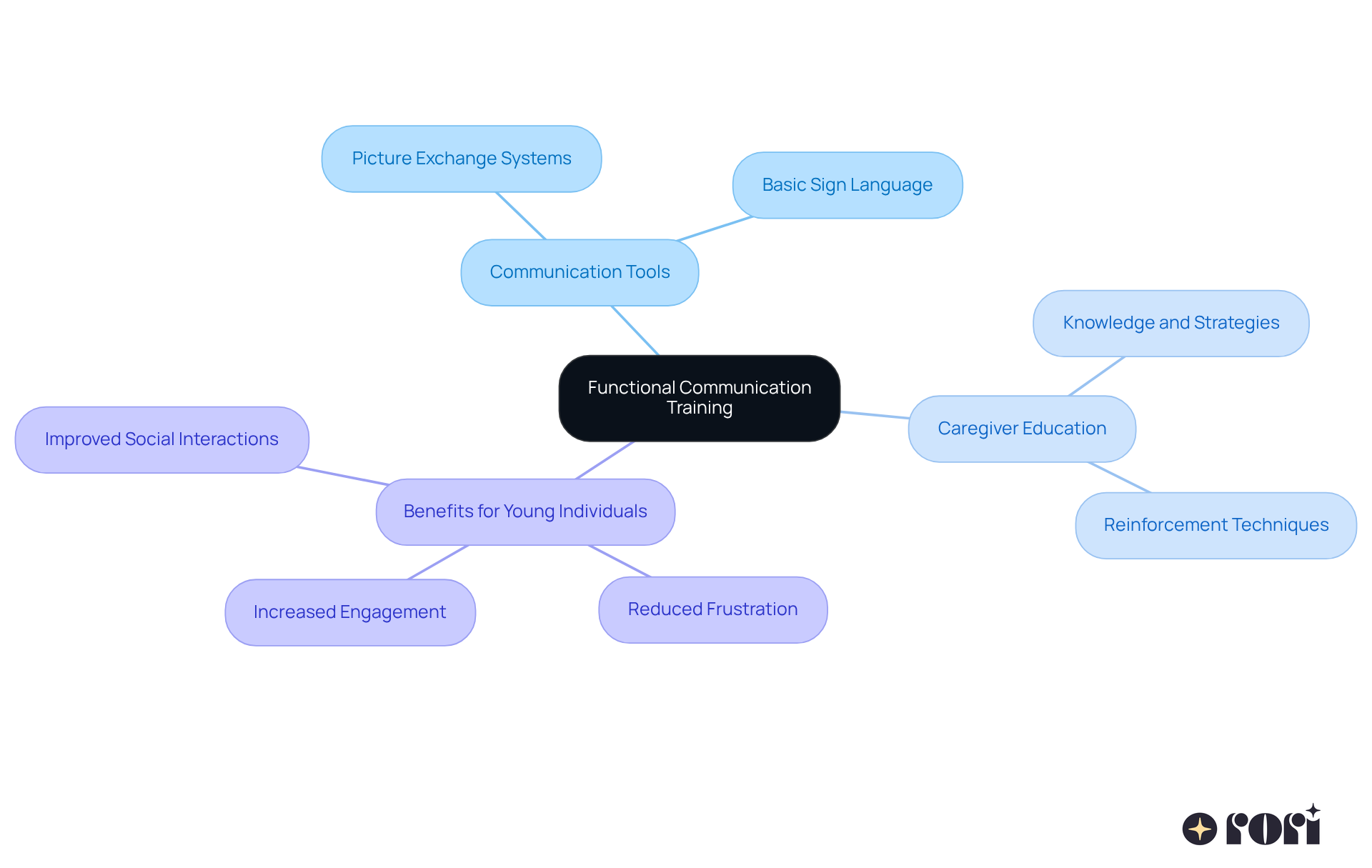
Social stories are like personalized narratives designed to help young individuals navigate social situations and understand appropriate responses. By illustrating specific scenarios—such as attending a birthday party or sharing toys—these stories prepare kids for what to expect and how to behave. For example, a social story about waiting for a turn can really help a child through that process, easing anxiety and promoting cooperation. This approach not only boosts social understanding but also encourages positive interactions with peers.
Research shows that these tailored narratives can significantly improve children's social behavior. Studies indicate that kids engaging with social stories demonstrate noticeable improvements in their ability to interact appropriately in various contexts. Behavior analysts highlight that using narratives to enhance social understanding is a powerful tool for promoting essential skills, making social stories an important part of effective high probability ABA therapy.
By empowering caregivers with ABA concepts and techniques, they can actively support their children's engagement with social narratives. This leads to better behavioral outcomes and reduced stress within the family. Caregivers can easily implement these strategies by regularly reading social stories with their kids and discussing the scenarios. This reinforces the lessons learned, enhancing the overall effectiveness of the therapy. Let’s explore this together and see how these stories can make a difference in your child's social journey!
Natural Environment Teaching (NET) is a fantastic way to teach essential skills by using everyday situations. Unlike Discrete Trial Training (DTT), which can feel a bit rigid, NET focuses on learning in natural contexts. For example, when you're at the grocery store, a clinician can help a young person practice asking for items or following directions. By embedding these learning moments in real-life scenarios, kids are more likely to use their skills when it matters most.
This approach not only helps with sticking to the lessons but also encourages independence and builds confidence. Imagine how much easier daily challenges can become when kids feel prepared! Research shows that young people involved in NET see impressive gains in skill retention and application—studies even show a 30% boost in communication skills compared to traditional methods.
One clinician noted, 'NET encourages the generalization of skills and boosts motivation, resulting in more effective and efficient learning results for individuals with autism spectrum disorder.' So, how can parents bring NET into their homes? It’s simple! You can create learning opportunities during daily routines. For instance, let your child help with grocery shopping by asking for items or counting products.
By coordinating these approaches with personalized planning and clear goals, you can really enhance your child's learning experience. Plus, caregiver training can equip you with ABA concepts and techniques that have a high probability of helping you make informed choices that positively impact your child's development. This practical method reinforces what they’ve learned, improving retention and application.
NET truly is a powerful tool for creating meaningful learning experiences! And remember, integrating evidence-based approaches and ongoing assessment into your NET practices can further boost results, ensuring that your child’s development is consistently monitored and adjusted as needed. Let’s explore this together! We’re here to help you every step of the way!
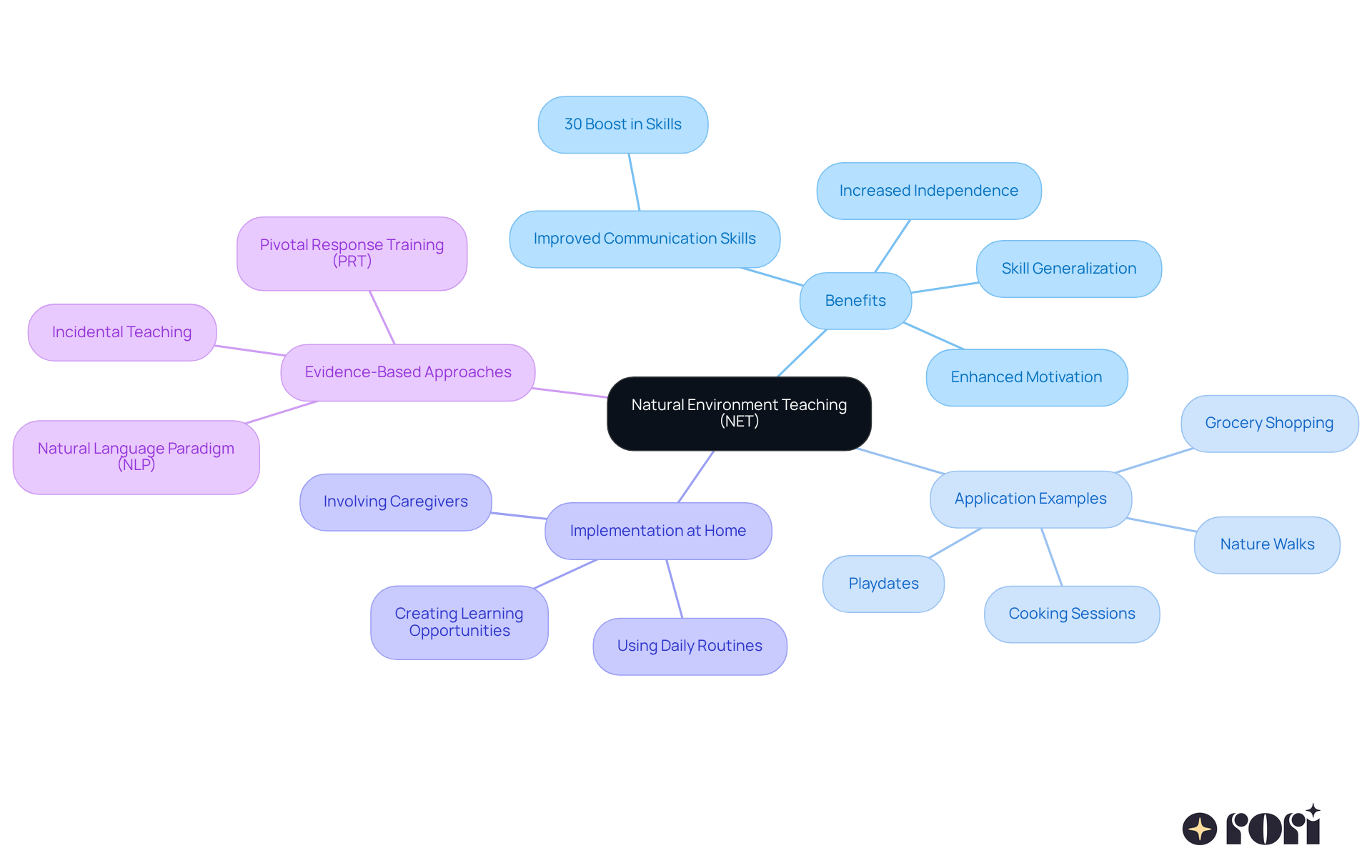
Parent-led interventions play a crucial role in empowering families to actively engage in their child's journey of behavioral change. By equipping parents with effective tools and methods, clinicians at Rori Care foster a cooperative approach to therapy that truly enhances outcomes. For example, when parents use strategies like token economies and visual aids in their daily routines, it not only encourages positive behaviors but also strengthens the bond between parent and child.
This consistent application of strategies is essential—research shows that parental engagement is strongly linked to better behavior results in youth. At Rori Care, effective parent training programs typically include over 40 hours of instruction, ensuring that parents feel confident and capable in their roles. This education enriches caregivers' understanding of high probability aba principles, enabling them to make informed choices that positively impact their children's progress.
As a result, families experience transformative changes, leading to improved communication, emotional regulation, and overall well-being for both parents and children. This collaborative model not only addresses behavioral challenges but also nurtures an environment where young individuals can truly thrive. As Devan Clayton from Brigham Young University points out, "Children with autism spectrum disorder (ASD) have been shown to benefit from parent-implemented interventions (PIIs)," which underscores the vital role of parental involvement.
Plus, these strategies can be adapted for older children and teenagers, ensuring that the approach remains relevant as they grow. Let’s explore this together! We’re here to help you every step of the way!
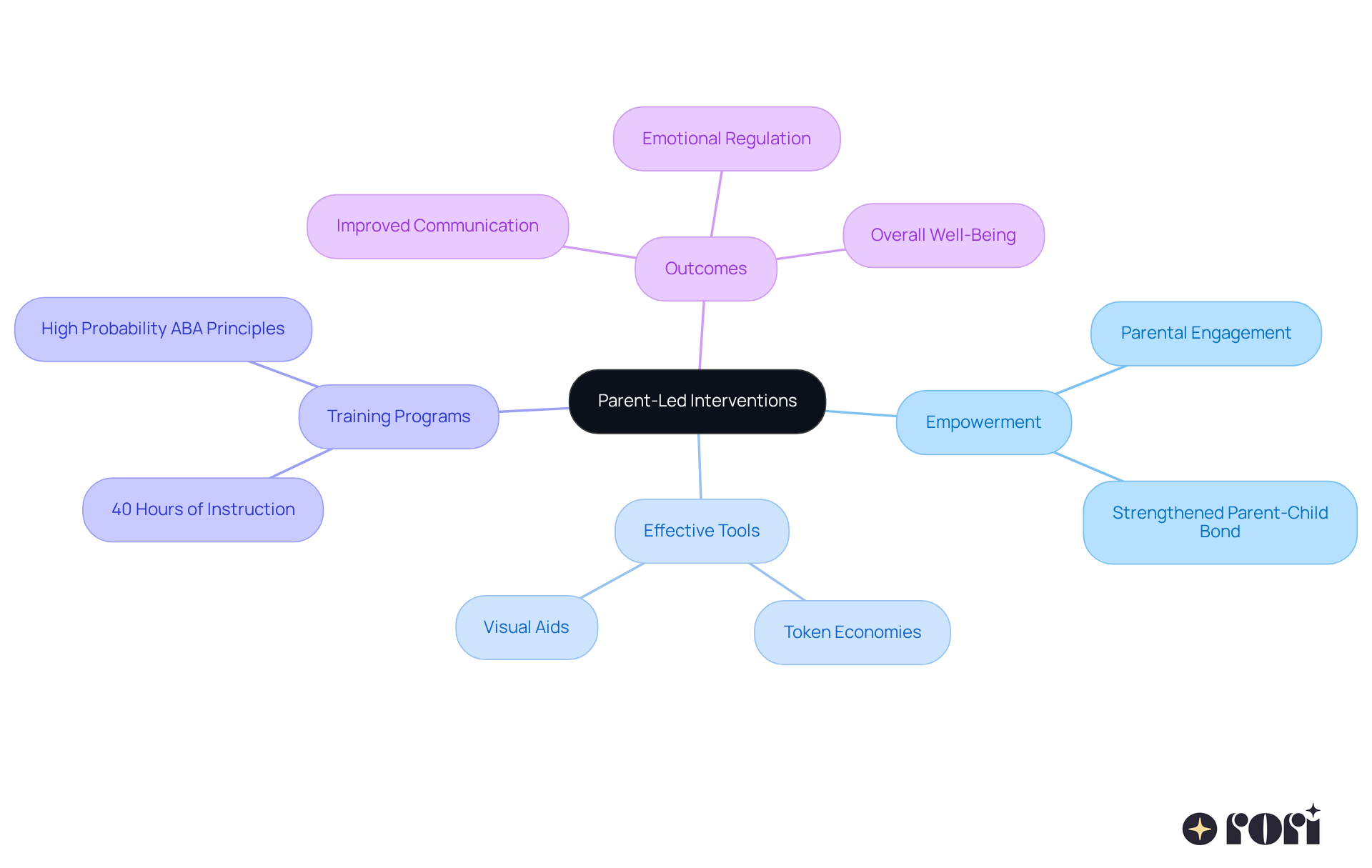
As we wrap up, let’s take a moment to appreciate the power of high probability ABA techniques. This article has highlighted how tailored strategies can truly enhance a child's compliance and overall behavioral development. By focusing on personalized approaches, families can create supportive environments that foster positive behavior changes, ensuring that each child's unique needs are met effectively.
We’ve discussed some key techniques like:
These strategies are designed to motivate children and promote engagement. Plus, methods such as token economies and Functional Communication Training empower kids to express their needs and navigate social situations more effectively. It’s amazing how these strategies not only enhance compliance but also build essential skills for long-term success.
Ultimately, the collaboration between clinicians and families is vital in implementing these strategies. By actively participating in their child's therapy, parents can reinforce learning at home, creating a consistent and nurturing atmosphere for growth. With innovative techniques and ongoing support from professionals, children with autism spectrum disorder can truly thrive and achieve their behavioral goals. So, let’s embrace these effective ABA methods together! We’re here to help you every step of the way!
What is Rori Care's approach to ABA therapy?
Rori Care utilizes personalized ABA therapy based on high probability techniques tailored to each child's unique needs, enhancing adherence and creating a nurturing environment for positive behavior changes.
How does Rori Care incorporate technology into their therapy?
Rori Care integrates technology by using AI to automate progress report creation, allowing clinicians to focus more on direct treatment, which improves the effectiveness of the therapy.
Why is family involvement important in ABA therapy at Rori Care?
Family involvement reinforces progress and strengthens skills learned at home, amplifying the therapy's impact and supporting the child's behavioral goals.
What is the Premack Principle in high probability ABA therapy?
The Premack Principle is a strategy that uses preferred activities as rewards to encourage children to complete less appealing tasks, making learning more enjoyable and improving adherence rates.
How can parents implement the Premack Principle at home?
Parents can identify activities their children enjoy and use them as rewards for completing necessary tasks, reinforcing positive behavior and making learning more engaging.
What is behavioral momentum in ABA therapy?
Behavioral momentum is an approach that starts with simple tasks to encourage compliance, gradually progressing to more complex requests, which helps build confidence and improves adherence rates.
How does starting with easy tasks benefit children in therapy?
Beginning with manageable tasks helps children experience success, which boosts their readiness to comply with later, more challenging requests, supporting long-term behavioral development.